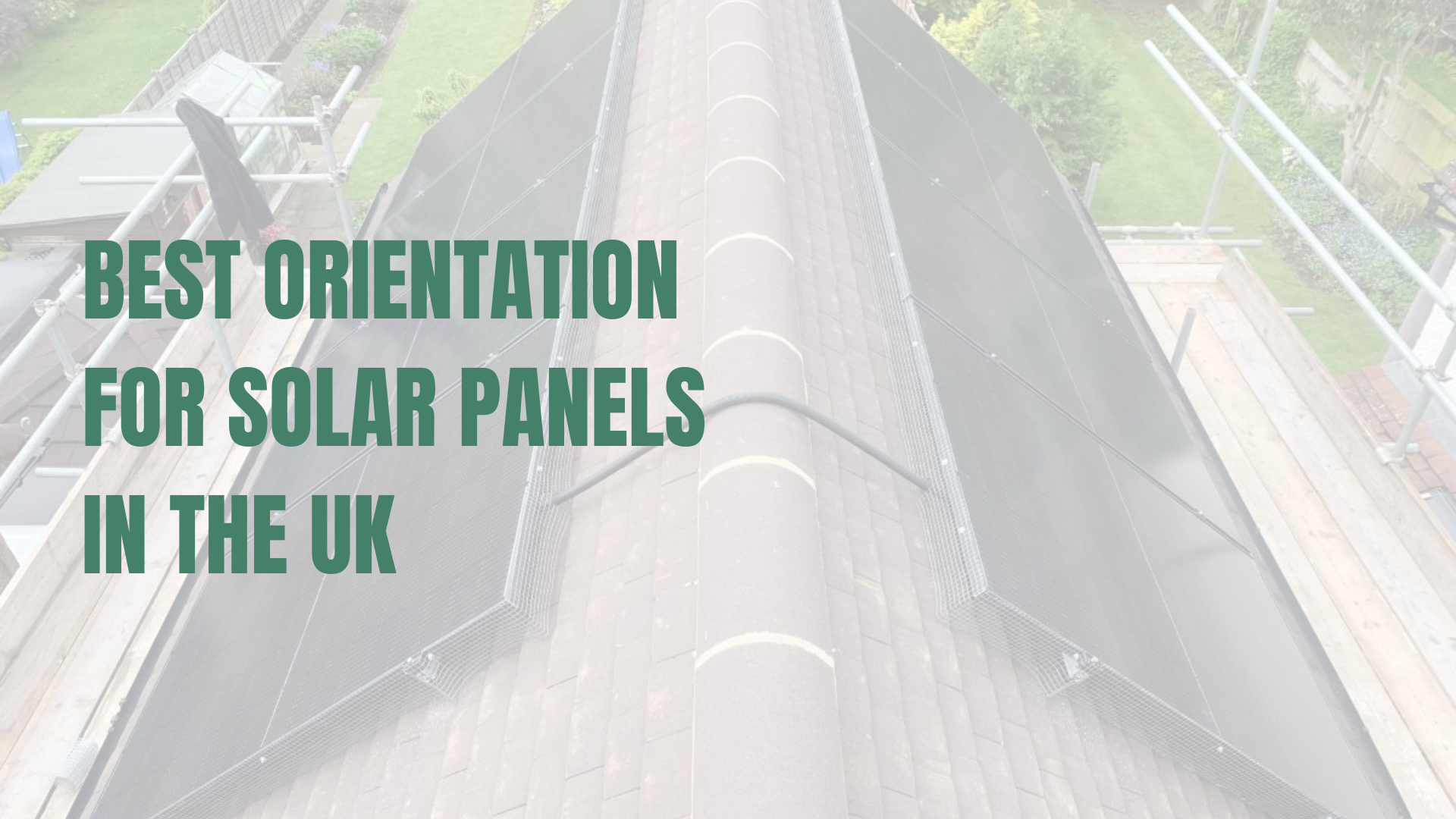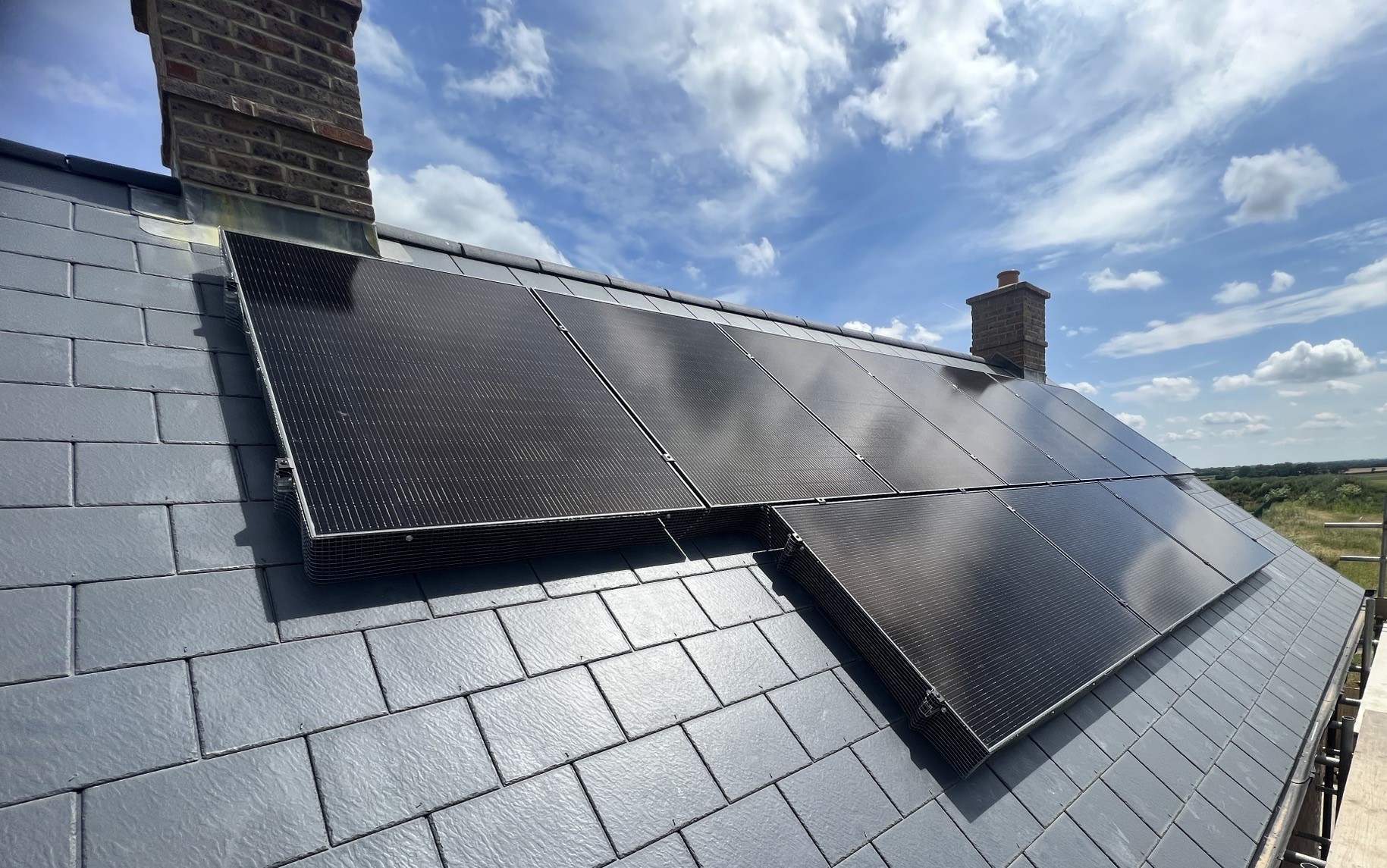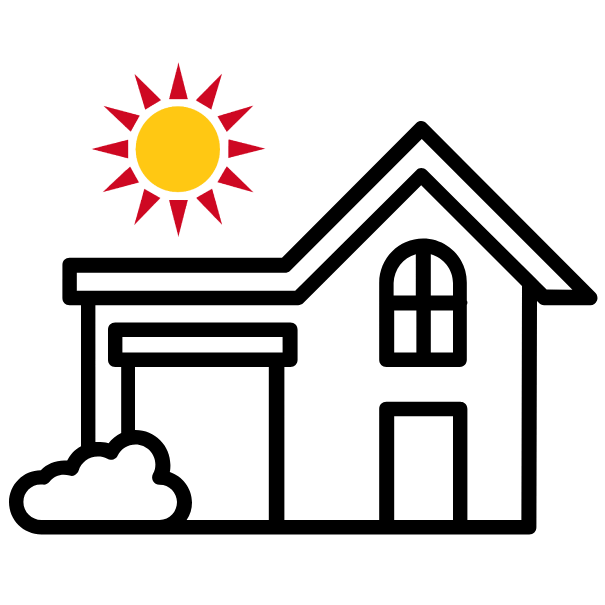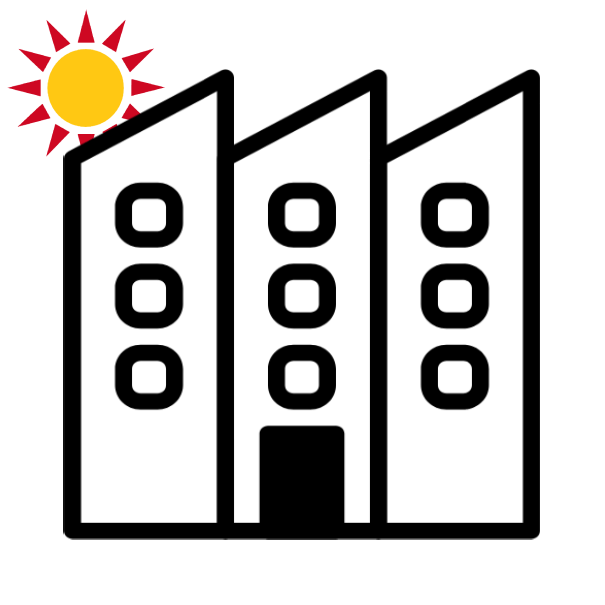Are you looking into solar for the first time? Wondering if your roof is right for solar? Choosing the right direction and angle for your solar panels can have a significant impact on your energy generation, savings and overall efficiency. At SolarTherm UK we’re leading solar specialists, covering Essex, Kent, Suffolk and the surrounding South East, helping homeowners get the most out of their solar investment by optimising orientation and angle.
What is the Best Orientation for Solar Panels?
In the UK, the best orientation for solar panels is generally south facing. South facing panels capture the most sunlight throughout the day, allowing your solar PV system to generate the highest possible energy output. This alignment follows the sun’s path from east to west and ensures your panels receive the maximum direct sunlight all day.
However, not everyone has a perfectly south facing roof. This is where SolarTherm UK comes in, we can help design a system bespoke to your property, that is maximised to support energy generation. Southeast and southwest roofs or even east and west facing roofs are still suitable for solar panels.
Why Orientation Matters
The orientation of solar panels affects how much sunlight they receive, which impacts energy production. Installing your solar panels at the correct orientation ensures your system converts as much sunlight as possible into electricity, saving you the maximum amount on your energy bills.
Optimal Tilt Angle for Solar Panels
Along with orientation, the tilt angle of your panels can also impact your solar production. In the UK, the ideal tilt range is 20° to 50°, with the South East benefitting from an angle of around 30° tilt. The tilt ensures your panels are facing the sun directly, maximising energy capture. Roof pitch, shading and local weather conditions can also affect efficiency, so a full evaluation and feasibility study with a trusted, local installer like SolarTherm UK is essential before installation.
How Different Roof Orientations Perform
South Facing Roofs
South facing panels are the most efficient choice in the UK, providing the highest energy output throughout the day.
North Facing Roofs
North facing panels receive less direct sunlight and are generally less efficient. The additional costs of installation for north facing panels rarely generate enough additional savings to justify the additional investment.
East and West Facing Roofs
East and west facing panels are an effective alternative for homes without a suitable south facing roof. East facing panels capture morning sunlight, while west facing panels capture afternoon and evening sunlight. Installing panels on both sides of an east-west roof can provide a balanced and consistent energy supply throughout the day.
Factors Affecting the Best Orientation for Solar Panels
At SolarTherm UK, when we carry out your initial feasibility study, we consider a number of factors to determine which is the best orientation for solar panels on your roof. Roof direction and angle, while south facing and 30° angle are optimum for most properties, if your south facing roof is in full shade, an installation on another orientation may be more efficient. Trees and nearby building can block sunlight, reducing output, while there are options, like installing microinverters or power optimisers on your panels, these are more expensive and if there is an alternative option, we will consider this.
Maximise Your Solar Energy with SolarTherm UK
While south facing solar panels are ideal, east and west facing installations can still deliver excellent performance and savings. At SolarTherm UK our design specialists consider roof angle, shading and local weather to design a solar PV system optimised to generate maximum savings and energy.
Start your journey today by contacting SolarTherm UK for your free no obligation design and quote, tailored to your property, usage and future energy needs. No hard sell, just honest, expert advice.
Your home. Your energy. Your future.
FAQs
1. What is the best orientation for solar panels in the UK?
The best orientation for solar panels in the UK is generally south-facing, as it captures the most sunlight throughout the day. South-facing panels deliver the highest energy output and maximise your system’s efficiency.
2. Can solar panels work on east or west-facing roofs?
Yes! While south-facing panels are ideal, east- and west-facing roofs can still generate around 80–90% of the energy of south-facing systems. Installing panels on both sides of an east-west roof can provide balanced energy production throughout the day.
3. Are north-facing solar panels worth it?
North-facing panels are less efficient in the UK due to limited direct sunlight. However, using high-efficiency panels and adjusting the tilt can make them viable in some situations. Combining them with east- or west-facing panels may also improve overall output.
4. What is the best tilt angle for solar panels in the UK?
The ideal tilt for solar panels in the UK ranges between 20° and 50°. Southern England typically benefits from a tilt of around 30°, while northern areas may require a tilt closer to 40° to capture maximum sunlight.
5. Do shading and roof pitch affect solar panel orientation?
Absolutely. Shading from trees or nearby buildings can significantly reduce energy output, and your roof pitch can impact the optimal tilt. Evaluating both factors is essential to ensure your solar panels achieve peak efficiency.
6. How do seasonal changes affect the best orientation for solar panels?
The sun’s path changes with the seasons, which can slightly affect solar panel performance. Choosing a south-facing orientation with an optimal tilt helps balance sunlight capture across the entire year, maximising annual energy production.
7. How can I determine the best orientation and tilt for my home?
SolarTherm UK offers a solar panel calculator that considers your roof’s orientation, tilt, shading, and local climate. It provides a personalised estimate of energy production and potential savings, helping you make the most of your solar investment.





